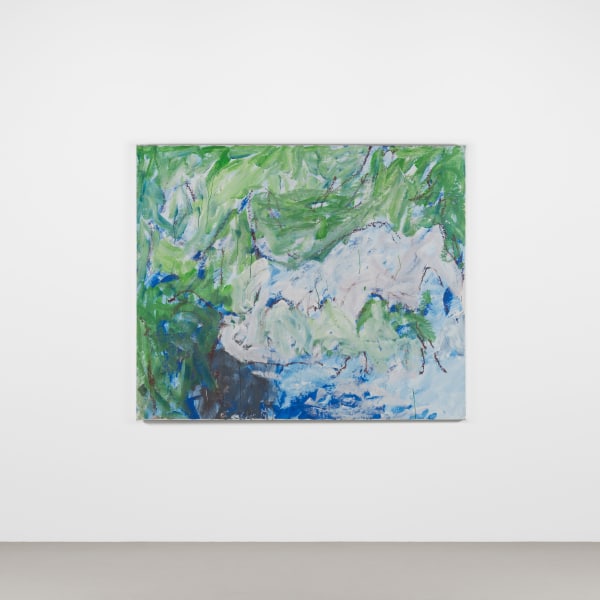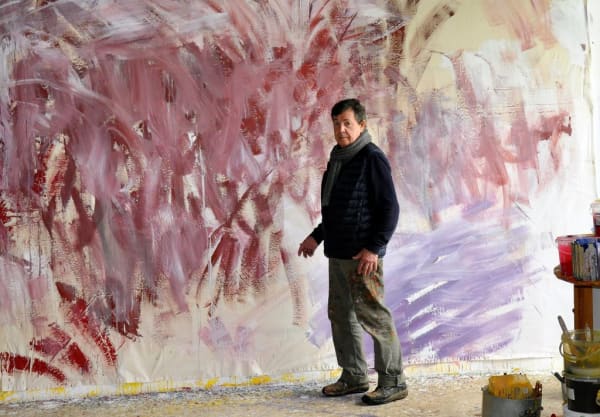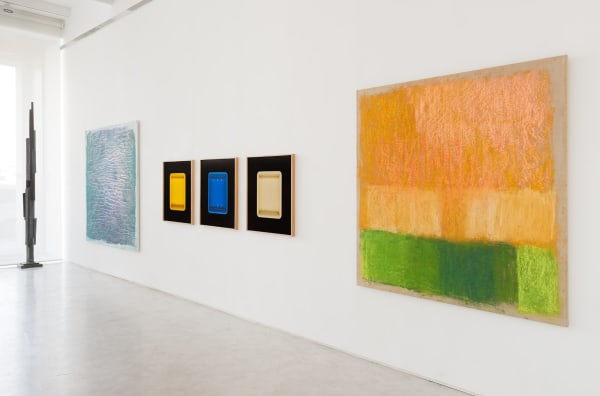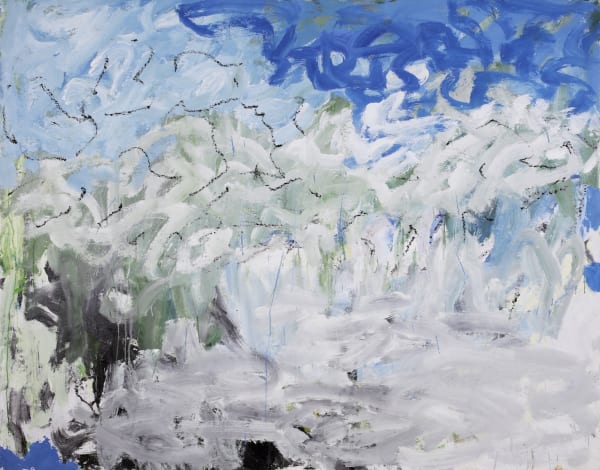CHRISTIAN SORG
Christian Sorg is a French painter who lives and works in France and Spain. After receiving a classical education at the École Nationale des Beaux-Arts in Paris and regularly studying in the Louvre’s drawing department, he took part in numerous exhibitions, notably at the Musée d’Art Moderne de la Ville de Paris in 1977 (Travaux Paris 77) and in 1983 (Tendances de l’Art en France).
In the early 1990s, following many stays in Aragon, a new pictorial calligraphy emerged for him. He explored the preserved landscapes of the sierras, visited prehistoric sites in the Levant region as well as those in Arcy-sur-Cure, very close to his studio in Burgundy. Drawing from these physically and emotionally intense experiences, Christian Sorg draws, paints, marks, and transposes onto canvas the powerful presence of early human artworks, the fragility of the world and the environment, and the fleeting brilliance of life. Christian Sorg is a contemporary voice that reconnects with the most ancient echoes. To date, he has held more than 400 exhibitions in France and abroad.
ABOUT CHRISTIAN SORG:
Christian Sorg, born in Paris in 1941, is a French painter who lives and works in France. His artistic journey began at the École des Arts Appliqués, where he chose to study sculpture. He continued his studies at the École Nationale des Beaux-Arts in Paris, where he developed his connection to painting. Over the years, Sorg has created a unique pictorial language, inventing his own method of interpreting and appropriating reality.
His works are part of numerous prestigious collections, including the Musée d’Art Moderne de la Ville de Paris, the Musée d’Art Moderne de Saint-Étienne, the Musée National d’Art Moderne at the Centre Georges Pompidou, Les Abattoirs in Toulouse, the Musée des Beaux-Arts in Nantes and Rouen, the Musée-Galerie Carnot in Villeneuve-sur-Yonne, the Musée de Sens, the Musée de Soissons, and the Musée de la Vallée de la Creuse in Éguzon-Chantôme. Additionally, his works can be found in the Bibliothèque nationale de France (BNF), as well as in libraries and art lending institutions in Avallon, Bayeux, and Riom, and in the corporate collections of BNP and Worms banks.
Internationally, his works are held at the Musée d’Art et d’Histoire in Geneva (Switzerland), the Institut Français in Barcelona, the Museo de Calaceite (Teruel), the Museo del Dibujo (Huesca), the Museo Provincial de Teruel, the Museo Goya (Zaragoza), and the Museo Pablo Serrano (Zaragoza). His work is also included in the collections of the Zervos, Colas, and Noésis foundations (Spain), the MATMUT Foundation, and the Fondation Bouvet-Ladubay in Saumur. Regional and national public collections, such as the FRAC (Alsace, Haute-Normandie, Midi-Pyrénées) and FNAC in Paris, also house his art.
-

CHRISTIAN SORG
Los Prados 6 Feb - 22 Mar 2025Galerie Dutko is pleased to present, from February 6 to March 22, 2025, the new exhibition by French artist Christian Sorg (b. 1941). A collection of large-format canvases created between...Read more -

Christian Sorg
Œuvres récentes 2013-2023 15 Feb - 15 Apr 2023La Galerie Dutko a le plaisir de présenter du 15 février au 15 avril 2023 une exposition d’oeuvres de l’artiste français Christian Sorg. Pour la seconde exposition personnelle de l’artiste...Read more -

A COLOR SHOW
Exposition collective 22 Sep - 19 Nov 2022Exposition collectiveRead more -

SUMMER SHOW
Exposition collective 30 Jun - 31 Jul 2021Read more -

Christian Sorg
20 Feb - 3 Apr 2021These are emergences. Fruits, flowers, the crossing of a souk, a sky, an oil on canvas according to Goya, stone landscapes or prehistoric caves: everything here appears suddenly; shapes and...Read more -

New Paintings
5 Dec 2020 - 6 Feb 2021Read more
-

/Solo Exhibition/ Christian Sorg - Peindre pour dire le monde
Centre d’Art Contemporain Bouvet Ladubay, Saumur 1 June - 29 September, 2024 Read more -

/Group exhibition/ Beatrice Casadesus, Monique Frydman, Jean-Pierre Pincemin, Christian Sorg - Le choix de la peinture
Musée de Tessé, Le Mans 10 February - 9 June, 2024 Read more









